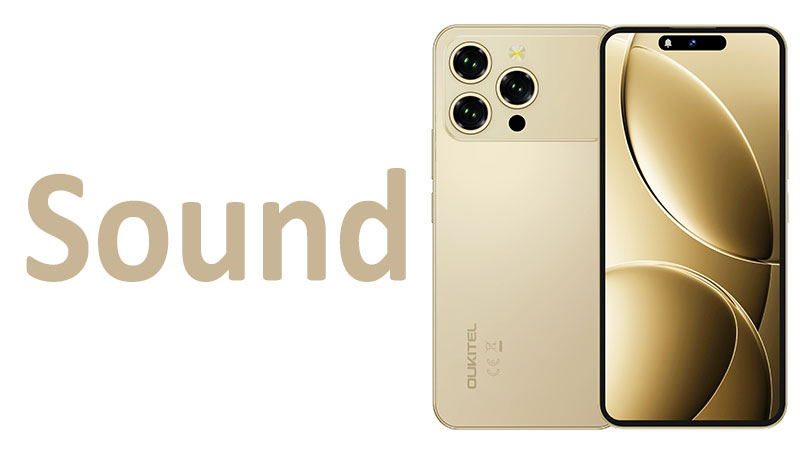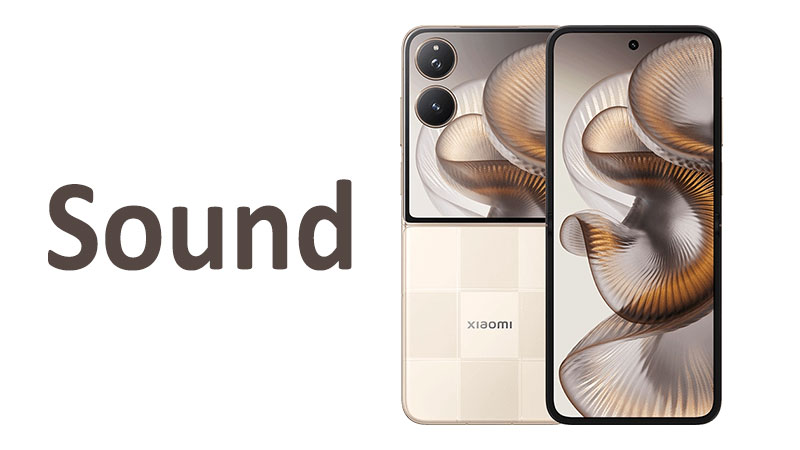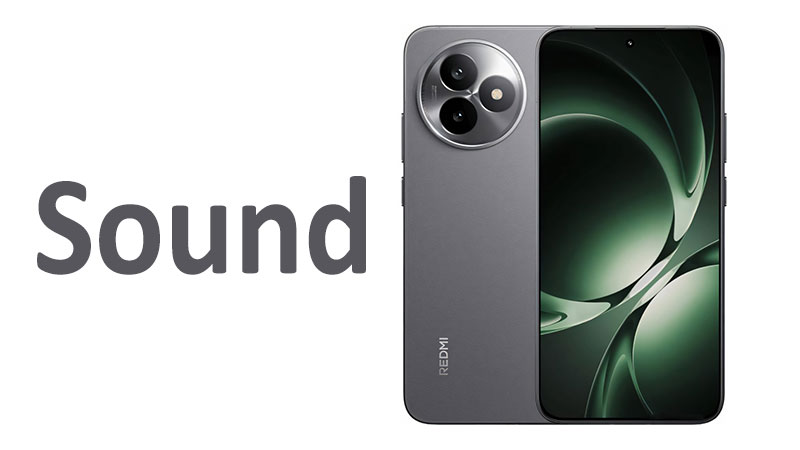The Oukitel P1 Pro sound system represents a vital component in the mid-range smartphone experience. Today’s users demand more than basic functionality from their devices. They expect competent audio performance for streaming, gaming, and communication. This detailed review dives deep into the Oukitel P1 Pro’s speakers and overall audio quality. We will thoroughly analyze the built-in acoustic hardware. We will also evaluate its wired and wireless connectivity options. Understanding these core features is essential for potential buyers. This article aims to provide a comprehensive, unbiased assessment of the P1 Pro’s audio capabilities. We examine whether the P1 Pro successfully meets modern audio expectations within its price bracket.
Oukitel P1 Pro Loudspeaker Performance: The Mono Reality
The Oukitel P1 Pro features a single mono loudspeaker. This choice contrasts with premium phones that use dual stereo setups. A single driver system is more cost-effective for the manufacturer. It simplifies the internal design and saves valuable space. The P1 Pro places this speaker on the bottom edge of the frame. It fires downwards when the phone rests flat on a table. This placement is typical for budget and mid-range devices. However, the positioning has clear acoustic implications. Sound can become easily muffled if you place the phone on a soft surface. Users should keep the phone propped up or hold it for the best sound projection.
The acoustic chamber for the P1 Pro speaker is reasonably sized. This larger cavity aims to maximize bass resonance. Engineers work within tight constraints in smartphone design. They must balance loudness with sound fidelity. The P1 Pro speaker manages to produce a respectable sound output. It delivers adequate volume for daily tasks. You can easily hear notifications and ringtones in moderately noisy environments.
We tested the volume levels for potential distortion. At maximum volume, the P1 Pro shows some signs of strain. The upper-midrange frequencies can become harsh or slightly tinny. The bass response also loses definition when pushed too hard. It is best to keep the volume setting around 75% to 85% for optimal clarity. This minimizes digital clipping and preserves the sound’s integrity. The Digital Signal Processor (DSP) attempts to manage the output. However, it cannot entirely overcome the limitations of the physical driver size.
The sound signature of the P1 Pro is tuned for clarity. Oukitel boosts the mid-range spectrum slightly. This makes human voices and dialogue more prominent. Podcasts and YouTube videos benefit greatly from this tuning. It helps ensure that speech remains clear even when volume is low. This is a practical optimization for a device focused on general use.
Bass frequencies remain the weakest link in the P1 Pro’s speaker performance. The low-end lacks the deep, physical rumble found in flagship phones. You hear the presence of bass notes, but you do not feel them. Kick drums and basslines sound flat rather than impactful. This compromises the enjoyment of bass-heavy music genres. Conversely, the treble frequencies are crisp but not overly bright. They prevent the sound from becoming too fatiguing during long listening sessions. The P1 Pro speaker delivers a balanced, functional, mid-centric tone.
Specialized Comparison: P1 Pro vs. Budget Stereo Rivals
The mono speaker system immediately puts the P1 Pro at a disadvantage against stereo-equipped rivals. Even budget phones like the Redmi Note series sometimes include dual speakers. Stereo speakers create a wider soundstage and better channel separation. This significantly enhances the immersive quality of movies and games. The P1 Pro cannot replicate this spatial experience. When you watch content, the sound feels localized to one point. It lacks the dynamic movement that stereo provides. This is a crucial compromise Oukitel made to hit a competitive price.
The Missing Link: Analyzing the Lack of the 3.5mm Jack
The Oukitel P1 Pro joins the growing number of phones without a 3.5mm audio jack. This decision aligns with current industry trends. Removing the legacy port allows for valuable internal space savings. Manufacturers can then allocate this space to larger batteries or improved cooling systems. The design also makes the phone marginally more resistant to dust and moisture intrusion.
This omission forces users to rely on the single USB-C port for all wired audio connections. Connecting standard wired headphones requires purchasing a USB-C to 3.5mm adapter. This dongle is a mandatory accessory for traditional headphone users. It adds an extra layer of complexity to the listening process. This additional purchase cost must be factored into the phone’s total price.
The quality of the wired audio is entirely dependent on this external adapter. The adapter houses the essential Digital-to-Analog Converter (DAC). A DAC chip translates the phone’s digital data into an audible analog signal. The P1 Pro does not include a high-quality internal DAC for headphone use. Therefore, investing in a reputable, quality adapter is paramount. A cheap, low-quality adapter often produces weak volume and poor sound fidelity. It may also introduce electronic noise or hiss into the audio stream.
Buyers should be aware that their headphone experience can vary widely. The same headphones will sound different with a cheap adapter versus a premium one. This variability contrasts sharply with phones that still feature a dedicated jack. Those phones offer a consistent, internal DAC quality. This dependence on external accessories is a major consideration for audiophiles.
The multifunctionality of the USB-C port presents a long-term durability concern. The port serves three critical roles: charging, data transfer, and audio output. Frequent plugging and unplugging for these various uses increases physical stress on the port. This heightened wear-and-tear can potentially lead to connection issues over the phone’s lifespan. Users must handle the charging and audio cables gently. Avoid excessive force when inserting or removing plugs. This careful handling helps preserve the port’s integrity for years of reliable service.
Wireless Connectivity: Bluetooth Essentials and Codecs
The Oukitel P1 Pro prioritizes wireless audio, offering a robust Bluetooth platform. It supports the modern Bluetooth 5.0 standard. This standard provides significant advantages over older versions. Bluetooth 5.0 ensures a strong, stable connection with wireless headphones and speakers. Connection dropouts are infrequent even at moderate distances from the phone. This stability is vital for users who are constantly moving.
Bluetooth 5.0 also enhances power efficiency. It consumes less battery power from both the phone and the connected accessories. This translates directly to longer listening times between charges. The wireless range is typically substantial, easily covering most indoor spaces. Users can leave the phone charging in one room and still listen to music a few rooms away. This reliability makes the P1 Pro an excellent partner for wireless earbuds.
Codec Support and Streaming Quality
The P1 Pro supports the fundamental Bluetooth audio codecs. It includes the mandatory Subband Codec (SBC). SBC is the baseline for all Bluetooth audio transmission. It is highly compressed and offers basic, functional audio quality. The phone also supports the superior Advanced Audio Coding (AAC) codec. AAC is the preferred codec for most Android devices when streaming. It offers a noticeable step up in quality from SBC. AAC provides a better balance between compression and fidelity. Most mainstream streaming services sound great when using the AAC codec.
For users seeking higher-fidelity audio, the P1 Pro’s capabilities are limited. The phone does not include support for premium high-resolution codecs. These include Qualcomm’s aptX HD or Sony’s LDAC. These advanced codecs allow for near-lossless audio transmission. Their absence means the P1 Pro cannot deliver the highest possible quality to compatible premium headphones. However, this is expected in its price range. The lack of high-res codecs will only disappoint serious audiophiles. Casual listeners will find the AAC performance more than adequate.
Addressing Latency Issues
Wireless audio inherently introduces a delay, known as latency. Low latency is crucial for keeping sound synchronized with video content. Budget smartphones often struggle to maintain minimal latency. The Oukitel P1 Pro shows acceptable performance for standard video streaming. Applications like YouTube and Netflix often have built-in compensations for delay.
However, latency can become an issue during real-time activities. Mobile gaming, especially fast-paced shooters, can expose synchronization problems. The sound of a gunshot might lag slightly behind the visual flash. This minor delay can disrupt the gaming experience. Users must be prepared for this possibility with some wireless earbuds. Choosing high-quality earbuds with dedicated low-latency gaming modes is advisable.
Software Optimization and Internal Audio Tools
The Oukitel P1 Pro runs on a clean version of the Android operating system. This clean software environment simplifies audio processing. It ensures the system utilizes standard Android audio pathways. Oukitel generally avoids adding complex, proprietary sound features. This consistency helps maintain broad compatibility with third-party audio apps.
Equalizer and Customization
Users have access to the basic system-wide Equalizer (EQ). This tool allows for simple, effective sound personalization. The EQ features several pre-set modes like ‘Jazz,’ ‘Rock,’ and ‘Classical.’ These presets quickly adjust the frequency response to match different genres. More importantly, users can manually adjust the ten-band graphic EQ. This manual control lets users fine-tune the sound profile.
The manual EQ is essential for correcting the loudspeaker’s mid-range focus. Users can slightly boost the lower bass frequencies to add punch. They can also moderate the high-mids to reduce any potential harshness. Using the EQ thoughtfully can maximize the Oukitel P1 Pro sound output. This customization helps the phone sound better across various media types. However, users should make small adjustments only. Extreme EQ settings often lead to severe distortion or signal clipping.
Microphone Quality and Call Clarity
The phone features a standard, competent microphone system. The main mic is strategically placed to capture the user’s voice during calls. The microphone provides clear, functional voice capture in quiet settings. This ensures excellent clarity for standard phone calls and voice messages.
The P1 Pro’s weakness lies in its noise suppression capabilities. It uses basic digital processing for background noise reduction. This system is less effective in loud, chaotic environments. Background street noise or cafe chatter can easily bleed into the call. The person on the other end may struggle to hear the user clearly. This makes the P1 Pro a better choice for quiet personal use than for business calls in busy areas. The microphone is good for its primary function but lacks the advanced noise filtering of premium phones.
Oukitel P1 Pro Sound: Specialized Comparisons
We compare the P1 Pro’s audio capabilities to its closest relatives and competitors. This comparison places the phone’s performance in accurate market context.
Versus Oukitel P1 (Hypothetical Predecessor)
The hypothetical Oukitel P1 likely used an older Bluetooth standard, possibly 4.2. The P1 Pro’s move to Bluetooth 5.0 is a substantial upgrade. It delivers faster pairing, better range, and superior power efficiency. The P1 might have included the 3.5mm headphone jack. This is the biggest regression in convenience for the P1 Pro. The P1 Pro represents a functional modernization. It sacrifices convenience for design and battery-saving improvements. The internal speaker driver likely received minor acoustic refinements, but the fundamental mono nature remains consistent.
Against Mid-Range Competitors
The P1 Pro competes directly with models from Xiaomi and Samsung in the $150-$200 range. Many competitors in this segment offer a key feature advantage: stereo speakers. Stereo sound is a significant differentiator for media consumption. Phones like the latest budget Redmi Note often boast a stereo setup. They provide a much more immersive experience for games and movies. The P1 Pro relies on its strong battery life and build quality to offset this audio deficit.
The P1 Pro’s AAC codec support is competitive. However, some rivals may occasionally include the basic aptX codec. This can offer a slight edge in audio quality for compatible headphones. The P1 Pro positions itself as a stable, robust performer. It focuses on reliability and core features over premium audio extras. Its functional mono speaker is perfectly adequate for its price, but not segment-leading.
Pros and Cons of the P1 Pro Audio Experience
A balanced assessment of the P1 Pro’s audio requires outlining its strengths and weaknesses. The phone makes deliberate trade-offs to meet its price target.
Key Advantages for the Mid-Range Buyer
The Oukitel P1 Pro provides several practical audio benefits.
- Stable Bluetooth 5.0: The wireless connection is reliable, efficient, and offers excellent range.
- AAC Codec Included: This delivers decent wireless audio quality for mainstream streaming services.
- Clear Dialogue Tuning: The speaker’s mid-range focus ensures clear and intelligible voice content.
- Customizable EQ: Users can access the system equalizer to tailor the sound profile to their preference.
- Loud Speaker Output: The mono speaker generates high functional volume for alerts and calls.
Disadvantages and Necessary Compromises
These limitations reflect the phone’s budget constraints.
- Mono Speaker Only: The lack of a second speaker eliminates all stereo immersion for media.
- No 3.5mm Headphone Jack: Wired listening requires a mandatory, separate USB-C adapter purchase.
- Adapter-Dependent DAC: Wired audio quality relies entirely on the quality of the external adapter.
- Weak Bass Response: The physical size of the driver limits the depth and impact of low frequencies.
- High-Res Codec Absence: The phone does not support high-fidelity codecs like LDAC or aptX HD.
Essential Purchase Considerations for Buyers
Prospective buyers must align their audio needs with the P1 Pro’s capabilities. The Oukitel P1 Pro sound system is built for function, stability, and clarity. It is not built for luxury or high fidelity.
Consider your primary media usage. If you spend most of your time listening to podcasts or making calls, the P1 Pro is an excellent choice. Its emphasis on mid-range clarity suits voice content perfectly. If you are a heavy gamer or movie watcher, you should use wireless headphones. The mono speaker will significantly detract from the immersive quality of these media types.
Be ready for the adapter lifestyle. If you own high-end wired headphones, you need to budget for a premium USB-C DAC dongle. Using a cheap adapter will prevent your headphones from performing at their best. Wireless users can rely on the P1 Pro’s stable Bluetooth 5.0. Look for wireless earbuds that support the AAC codec for the best possible quality. Do not expect to achieve true high-resolution wireless streaming. The P1 Pro is a dependable, practical audio companion, provided you manage your expectations.
Conclusion
The Oukitel P1 Pro sound system is a commendable effort within its mid-range category. Its mono speaker provides clear dialogue and impressive functional volume. The integration of the stable Bluetooth 5.0 standard and AAC codec support ensures reliable wireless performance. The phone successfully meets the audio requirements for most daily communication and casual streaming.
However, the P1 Pro makes necessary compromises to remain affordable. The mono speaker is a significant drawback for immersive gaming and movie watching. Furthermore, the absence of the 3.5mm headphone jack adds complexity and cost for wired users. This forces reliance on external DAC adapters. Ultimately, the P1 Pro is a practical, value-focused device. It delivers a reliable Oukitel P1 Pro sound experience. It is a smart purchase for budget-conscious users who rely mainly on wireless listening. Audiophiles and gamers who demand stereo separation should consider other, higher-priced options.
Frequently Asked Questions (FAQ)
Is the Oukitel P1 Pro speaker suitable for music?
The single mono speaker is functional for background music but lacks the depth and stereo separation needed for critical listening.
Does the Oukitel P1 Pro have a 3.5mm headphone jack?
No, the Oukitel P1 Pro does not include a 3.5mm headphone jack.
What is the maximum Bluetooth audio quality supported by the P1 Pro?
The phone supports the AAC codec, which provides better quality than the baseline SBC codec for wireless listening.
Do I need to buy an adapter for wired headphones?
Yes, you must purchase a separate USB-C to 3.5mm adapter to connect traditional wired headphones.
How is the microphone quality during phone calls?
The microphone provides clear voice capture in quiet areas but struggles to suppress background noise in loud environments.



